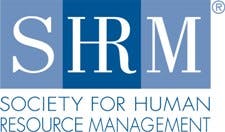Here’s a question I get a lot after attending a conference, and it is one you probably get too: How was it?
Last year after SHRM New Orleans, the answer was hard to give. That’s because we were in the middle of the Great Recession, the mood was pretty somber, and there were only around 7,000 actual SHRM attendees compared to 11,000 plus in Chicago 2008, and the more than 13,000 who were in Las Vegas back in 2007.
As much as I love New Orleans, the 2009 SHRM annual conference there was a tough one (although interestingly enough, exhibitors raved about the quality of the contacts they made there). That’s not the case this year in San Diego.
The 2010 SHRM conference is a lot happier and more upbeat than last year in New Orleans, and that’s despite a heavy dose of Southern California’s famous “June Gloom” that has kept the sun away and the city socked with low clouds and temperatures that don’t get out of the high 60s.
No, the weather hasn’t damped the enthusiasm of the SHRM attendees at all. People are happy that they’re back traveling again, they’re in lovely San Diego (local marketing slogan — “America’s Favorite City”) having professional and personal interactions, and there is a lot of career stimulation going on.
It’s what I wrote here a few weeks back: there’s a lot of “pent-up demand for people in HR and all the related talent management areas to get out and start attending industry conferences again.” That’s why conference attendance everywhere is up 25-35 percent this year, and that’s why the mood is back to normal at SHRM’s annual conference.
Here are a few more thoughts and observations after Day 2 here in San Diego:
- Ted Kennedy Jr. is a man of his word. When the son of the late senator spoke briefly before Al Gore’s Monday keynote (he talked about the critical need for HR to lead the way in hiring people with disabilities because “advocating for people with disabilities is not a partisan issue”), he said that he was going to stick around the SHRM conference, attend some sessions, and chat with some HR people. And, Kennedy was true to his word. I saw him walking around the conference with SHRM President and CEO Lon O’Neil, checking out the press room, and yes, even talking with some HR people in attendance.
- Big turnout for educational sessions. There seems to be a real hunger here in San Diego for education and insight, and that is evident from the big crowds that are packing the daily sessions. I can’t tell you how many had signs outside the door saying “Session Full,” and one that I attended Monday afternoon – 30+ Tools and Techniques for Attracting and Retaining Top Talent in 75 minutes, with Mel Kleiman of Humetrics – wasn’t quite full, but still had a good 350 people in attendance. Again, this may reflect the fact that a lot of people had their travel budgets gutted in 2009 and are now trying to catch up, but it also shows that HR people attending here don’t just view this as a good time junket – they’re here to get educated, too.
- More from the annual report. I’ve been thumbing through the 2009 SHRM Annual Report, and it is clear that although SHRM’s revenues got hit pretty hard last year (much like everyone else), they cut expenses a lot to help compensate for the shortfall. For example:
— Publications revenue and advertising dropped from nearly $24 million in 2008 to $18.72 million in 2009.
— Revenues from the annual conference went from $22.42 million (2008 in Chicago), down to $13.75 million (from last year in New Orleans).
— Seminars and educational programs slipped to $16.16 million from $19.38 million in 2008.
— Other conferences SHRM stages also saw a drop in revenue, from $5.43 million in 2008 to $3.49 million in 2009.
— But SHRM also trimmed its expenses – from $112.69 million in 2008 to $97.53 million last year.
Overall, SHRM managed to grow the organization’s total net assets in 2009 to $170 million (from $159.5 million in 2008) largely on the strength of an $11 million increase in revenue from long-term investments.
